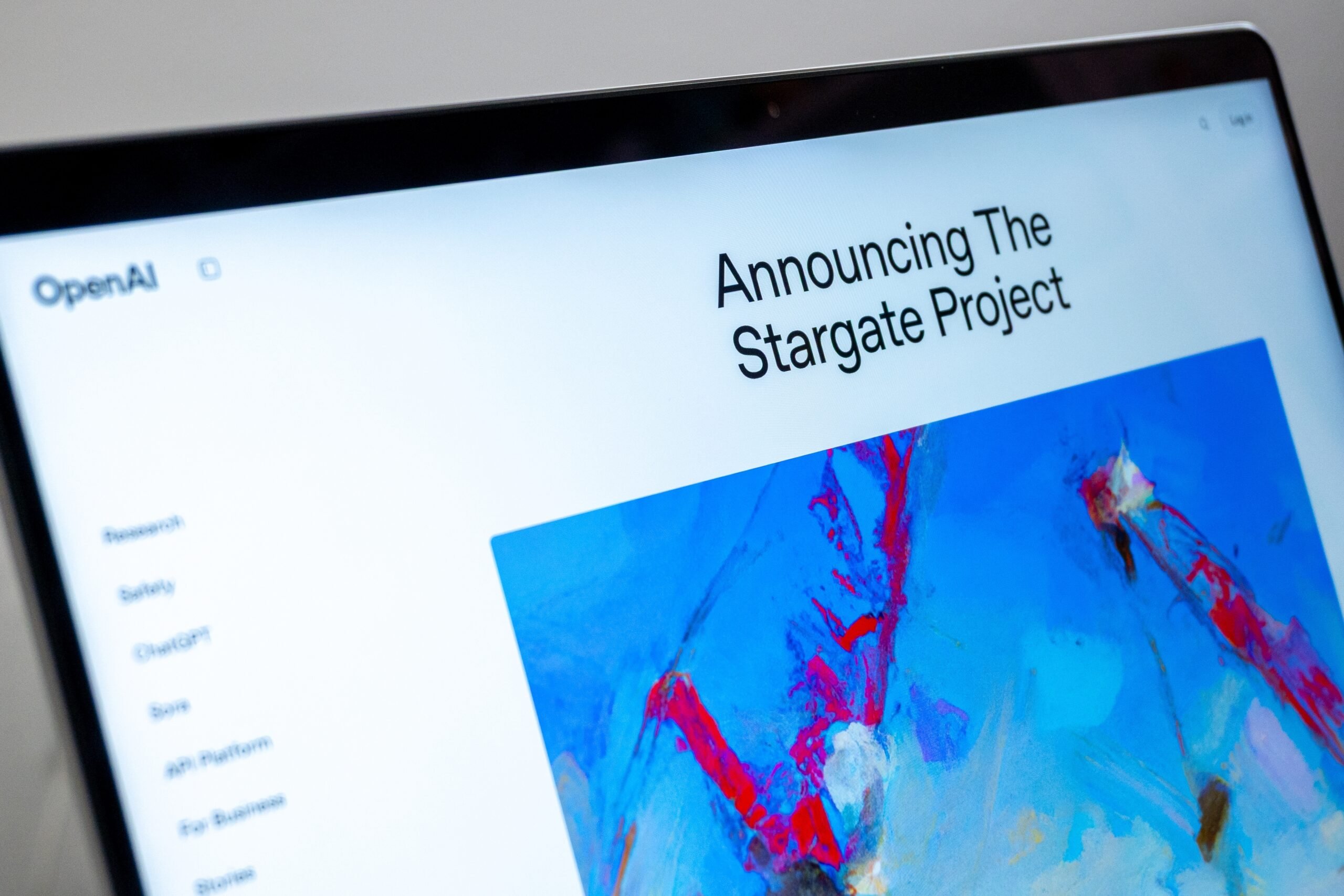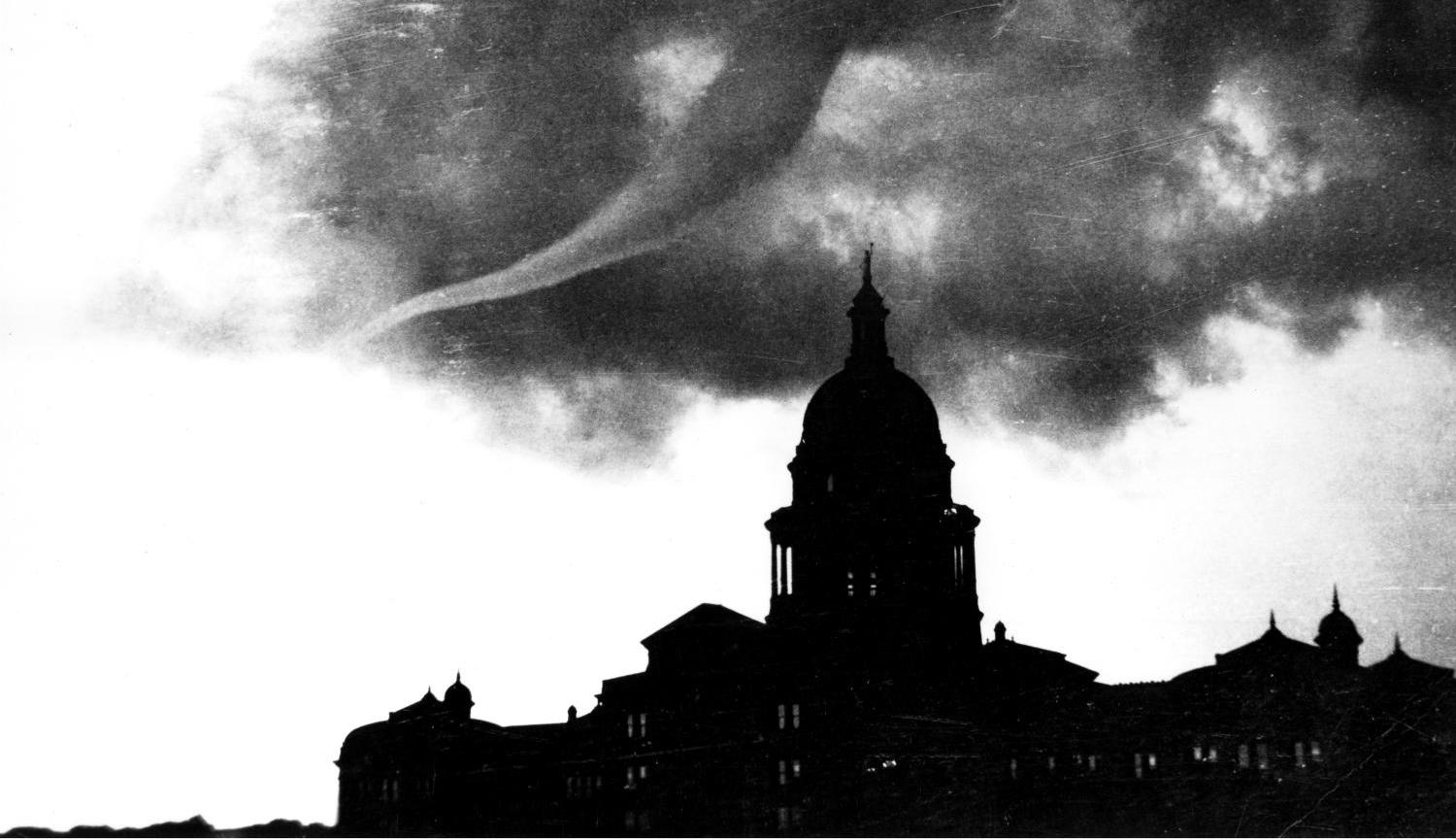Capitol Offenses
Lost in the Ozone
If they did this in Japan, they’d “have to commit suicide in shame,” said Jim Marston. The Austin lawyer who directs the Texas office of the Environmental Defense Fund was talking about Governor George W. Bush and Senator John Whitmire, the Houston Democrat. Five years ago, the two worked together to kill a tailpipe-emission testing program that by now would have made a considerable difference in the quality of the air in Texas cities.
Their success in killing a program then three years in the making cost the state $160 million in damages and legal fees – the biggest single judgment ever imposed on the state of Texas. And five years after the fact, the Texas Natural Resource Conservation Commission (TNRCC) is planning to return to a more stringent inspection and maintenance program – in particular a tailpipe test for nitrogen oxide, one of the test procedures Bush and Whitmire eliminated five years ago. Perhaps it’s better for them that they don’t live in Japan.
As we endure the ozone days of summer, when volatile organic compounds and nitrogen oxide created by cars, trucks, and industry mix with sunlight to create urban ozone – or smog – the state’s failed environmental policies become visible in the air above Houston, Dallas, Galveston, El Paso and Austin. Despite TNRCC Commissioner Ralph Marquez’s now infamous disclaimer – “After all, ozone is not a poison or a carcinogen, it’s a relatively benign pollutant compared to other environmental risks” – the TNRCC and the Legislature are preparing to clean up the testing mess Bush and Whitmire created five years ago. Smog, as former Monsanto executive Marquez has probably learned since he made that argument in Washington five years ago, is a serious health hazard.
George W. Bush didn’t start the fight against Tejas Testing in 1995. That distinction belongs to Houston Senator John Whitmire, still known to some as “Boogie” – a nickname that recalls a time in his career when Whitmire spent more time attending parties than legislative hearings. Tejas was a company put together by a group of investors led by Snap-On Tools, for the sole purpose of conducting tailpipe-emission tests in Texas cities that were out of compliance with the federal Clean Air Act, which was signed into law in 1990 by President George Bush. In 1993, Tejas had signed a contract with the state of Texas to provide the vehicle testing the EPA required. The contract was part of a compliance plan the state submitted to the EPA.
So while George W. Bush was running against incumbent Democrat Ann Richards, Tejas Testing was signing leases and buying property and equipment needed to set up 110 multilane tailpipe-emission testing centers in four regions declared out of attainment with standards of the Federal Clean Air Act. Once the program was up and running, Tejas would have hundreds of test lanes – including 103 in Dallas-Fort Worth – where vehicles would be tested for levels of volatile organic compounds and nitrogen oxide. The test was known as IM 240: IM being inspection and maintenance, 240 the number of seconds the test would last.
Hazel Barbour monitors emissions data collected by the current testing program – which is run by the Department of Public Safety – from her office at the TNRCC. In a telephone interview, Barbour explained the workings of the defunct Tejas program. Cars would be placed on dynamometers for simulated highway driving, and “for 240 seconds approximate driving at different speeds, over hills,” Barbour said. If emissions exceeded a certain volume, the vehicle would have to be repaired off-site and returned for a second inspection.
By January 1995, as Bush was being sworn in for his first term and the Legislature was convening, Tejas was testing in Dallas and preparing to begin testing in other cities. The company had attempted a public relations campaign to inform the public what was coming, but the TNRCC was under pressure from candidates on the November ballot to keep the program quiet until after the election. “Because of the timing of the election and implementing this in December, they had not put out much to the public,” said Representative Peggy Hamric, a Republican from Houston. “So the public was just blindsided. That’s always poor public policy.” According to Hamric, informing the people whose cars were to be tested was “held up because of the election.”
In late November, Tejas offered free testing at some sites in Houston as a trial run, anticipating that only a small number of car owners would turn out. When hundreds of drivers queued up for hours at test sites, the program found its way into the daily grind of right-wing talk radio. Within a few days, KPRC talk-radio host Jon Matthews made Tejas a household word in Houston. According to Hamric, who carried the bill to kill the program in the House, phones started ringing. “People were just very vocal on this,” Hamric said. “I found out one thing. It’s not very easy to mess with Texans’ cars and not have comments on it. I got more phone calls, I guess, than on anything else since I’ve been in the Legislature. And I know Senator Whitmire did also.”
Once it became a topic of talk radio in Houston, it became controversial,” said an Austin lobbyist who watched the process from the sidelines. “Then Whitmire picked up and ran with it.” Rather than lead, Whitmire, who had spent his entire life in a city that today has the worst air quality in the nation, decided to follow. Whitmire caught the anti-testing wave created by KPRC. And before long, Republican Governor George W. Bush would be following the impish Democratic senator from Houston.
Before Bush would quietly go after Tejas Testing in the House, John Whitmire violently attacked the company in the Senate. Whitmire complained that Tejas’ test was designed for “mountain” driving, an unchallenged embellishment of the hilly driving simulated by the IM 240 test. “Where do we have mountains in Harris County?” he asked. He wrote an op-ed article for the Houston Chronicle. He complained to anyone who would listen. And finally, he filed emergency legislation aimed specifically at Tejas. When the company responded by hiring lobbyists – a practice not exactly uncommon in Texas legislative politics – Whitmire launched into a speech that would have been slanderous had it not been delivered on the floor of the Senate.
In a personal privilege speech memorialized in the pleadings of a lawsuit that cost the state $160 million, the senator from Houston went completely over the top. Sawing the air with his arms and bellowing about a “smear campaign,” a company that was “in bed with the EPA,” and a federal government that was trying to “run our schools, our prisons, our air, and … our legislative process,” Whitmire began the process the governor would later finish in the House.
“I don’t do personal privilege speeches until I’m aggrieved,” said Whitmire. “It’s the second one in my career that I’ve done. Tejas Testing – in bed with the EPA from the get-go. They have hired investigators on me. I’ve heard rumors about my wife and me are separated, I go to Galveston on the weekend. I can’t describe printable language that would address what they’re doing. … A phone bank is beginning today to work on you in your districts to defeat the Whitmire package on behalf of the EPA.”
Then Whitmire read the names of the A-List lobbyists retained by Tejas: Steve Bickerstaff, Linda Aaker, Myra McDaniel, Carl Richie, Kraege Polan, Dickie Ingram, Buck Wynne, Bill Miller, Louis Bacarisse, Senator Kent Caperton, Buddy Jones, Randy Erben, Mignon McGarry, Dan McClung.
When Whitmire caught his breath, Dallas Senator Royce West asked a critical question: “Senator Whitmire, have you sought any legal guidance in terms of if we accept this particular amendment, whether the state would be in violation of any contract … ?”
“I have not seeked any legal advice ’cause I only saw the amendment 15 minutes ago,” Whitmire said. And with this odd mix of bad grammar and bad policy, John Whitmire persuaded a majority of senators to vote to kill the Tejas testing system.
Whitmire’s rhetorical excess provided the momentum to persuade the Senate to kill the program, but the tailpipe testing bill was still alive in the House, where Environmental Affairs Chairman Warren Chisum supported the Tejas program. Chisum is a Panhandle farmer who switched from the Democratic to the Republican Party, where he is more at home. While many in the environmental community were concerned when Democratic Speaker Pete Laney named Chisum chair of Environmental Affairs, Chisum has earned a reputation for standing up to off-the-wall environmental policies like the one Whitmire was trying to get through the House in 1995. “My position was that we had to fix that program rather than just killing it,” Chisum said in a telephone interview in September. “By the Legislature killing that program, we virtually got sued by Tejas.”
Chisum – who at the time also chaired the House Conservative Coalition – was no match for the newly elected Republican governor. “It was important that we had the governor supporting us,” said Hamric, the House sponsor of Whitmire’s Senate bill that would ultimately kill Tejas. All of Houston was behind her, she said – citing the support of then-Mayor Bob Lanier, the Harris County Commissioners Court, the pro-business Houston Partnership, and the City Council. On the other hand, rural legislators concerned about the loss of federal highway funds opposed killing the program. But the governor’s support made tailpipe testing more than a rural-urban fight.
Bush wasn’t as over-the-top as Whitmire – at least not in public. But the states’-rights position the governor took complemented Senator Jerry Patterson’s comparison of the Whitmire speech to the Confederate troops firing on Fort Sumter – 131 years to the day before Whitmire’s 10-minute rant on April 12. “I have a strong objection to an unelected federal bureaucrat applying heavy-handed pressure to the state Senate of Texas,” said Bush, according to a story in The Dallas Morning News. “I take great, great umbrage at the federal government trying to tell Texans how to run Texas. We don’t want the federal government dictating solutions to us.”
Bush warned EPA director Carol Browner to “get a hold of her agency.” And as he would do two years later when he attacked Secretary of Health and Human Services Donna Shalala over welfare reform, Bush got personal in a letter to Browner. “As you know I have frequently said Texans can run Texas. The tone of your letter is an example of the heavy handed approach of the federal bureaucracy, which is strongly resented by the people of Texas.” Bush also complained that the EPA’s recommendations were “based on neither sound science nor a common-sense approach to clean air.”
“The governor had his position and I had mine,” Chisum said. “And him being the governor, I guess he won.” Bush won precisely because of “him being the governor.” Legislators and lobbyists handicapping the Tejas fight at the time have since observed that Chisum had a good chance because rural legislators concerned about federal highway funds were supporting the testing program. Suburban legislators were worried about the highway funding too, and some urban progressives who lived in non-attainment areas could see that Bush and Whitmire were only holding the future at bay. It was only after Bush met with the Republican House Caucus, Hamric and other sources confirmed, that the tailpipe-testing program that would have addressed the state’s smog problem was declared dead. “He probably talked to the Democratic Caucus, too,” Hamric said. “That’s the way he works.”
The House vote and Bush’s signature on the bill forced Tejas into bankruptcy, forced its 820 employees onto the streets, and forced the state of Texas to defend its behavior before a district court judge in Austin. The governor wasn’t named as a defendant in the civil suit filed by Austin lawyer Roy Minton, because the TNRCC was the agency technically responsible for putting Tejas out of business. But Minton’s pleadings recognize that Bush wasn’t watching from the sidelines. “The State Legislature’s and the Governor’s attack on emissions testing in Texas and the Tejas Companies [sic] contracts to provide that testing continued unabated…” reads the plaintiffs’ petition.
Minton described the Tejas legislation Bush supported and signed into law as a breach of contract – which should have been obvious to the governor, who only months earlier was a candidate promising to bring his years of business experience to bear on Texas government. And despite Bush’s support of the Wise Use Movement, which rejects most federal involvement in state environmental issues, this was by any reckoning a foolish flouting of federal law. There are certain instances, Minton said, when federal legislation establishes specific standards states must meet in order to get federal funding. Ever since FDR was president, Minton said, states have been entering into agreements with the federal government. “When you put that proposal together and send it to Washington, if they approve it … then it becomes federal law. There’s not anything the Legislature can do to repeal it. It would be kind of like our Legislature appealing the income tax. You can do it all day long, but it doesn’t make any difference. And that’s the kind of hokey stuff they were doing.
“So we had a lay-down. I always like people to think: ‘Goddamn, that Minton must be something, getting all that money.’ But you know, my youngest grandchild would have done a pretty good job trying that case. There just wasn’t that much to it.” A district judge agreed and handed down a $200 million judgment. Minton said his clients settled for $160 million – part of which was $20 million in credit for the company.
There is no doubt about who was responsible. “The governor and Whitmire,” said the Environmental Defense Fund’s Marston. “They did away with the program and claimed to put in another program, not nearly as effective. … Then they got sued. They knew they were going to get sued. They lost $140 million. Instead of taking the money out of general revenue, the TNRCC said, ‘We don’t need this $140 million, take it.’ They took $130 million out of the environmental fund. And the Legislature was able to hide from the public the fact that they had made a decision that flushed $140 million down the drain. Now, when they don’t have enough funds, year after year, when they don’t do something for air and the underground storage [tank] program, they say, ‘we don’t have enough money to do that.’ Yeah. You don’t. You took $130 million out of environmental funds.” In other words, a double loss: The money used to pay for a clean-air program that was never implemented was taken from a fund to pay for clean air programs that were up and running.
The program that replaced what the governor and the Legislature scuttled 5 years ago has failed, although not everyone accepts that yet. Whitmire, who did not respond to a request for an interview, continued to defend the program and urged the state to appeal the district court’s decision. And the Bush presidential campaign won’t admit that killing the testing program was a bad decision. Asked if the campaign took the failed tailpipe-emissions cleanup program into consideration in shaping Bush’s current position on the environment, his campaign press secretary Karen Hughes responded, “What’s taken into consideration is that the EPA has reported that Texas leads the nation in reducing toxic emissions into our air and the Environmental Defense Fund has said that the electric dereg bill that the Governor signed is the best in the country.” Indeed, toxic emissions are being reduced, but as the nation’s leader in volume, Texas has a long way to go before it is anywhere near the national norm. And Bush does get credit for supporting strong pollution-control measures in the electric der
gulation bill, which he signed into law at the end of the 1999 legislative session.
But his role in killing the tailpipe emission bill is already being addressed at the TNRCC. Barbour said a new inspection and maintenance program – “but not IM 240” – will have to test for nitrogen oxide, which the Tejas program would have addressed. Chisum agrees. “The objective now is to reduce NOx [nitrogen oxide],” he said. The current testing program, administered by the Department of Public Safety instead of the TNRCC, ignores NOx. Every major urban area in Texas except El Paso has reported increased ozone pollution in the four years since Bush took office.
Meanwhile, since 1995, the ozone problem has also spilled over into the suburban counties surrounding the state’s big non-attainment areas. “Now, it’s Dallas plus eight, I think. And Houston plus nine,” Chisum said. “So you’re talking a lot more counties. You can’t just do it by cars. But in Dallas, 54% of the NOx comes from cars. It’s a significant amount of NOx that’s produced by mobile sources. I think it’s about 34% in Houston. We’re still faced with going in and doing something about cars in those non-attainment areas,” Chisum said. “That issue will be back before us in the next legislative session.
“The governor wasn’t in favor of bad air,” Chisum said. “But he was wrong. When you’re wrong, you’re wrong.”
Former Observer editor Louis Dubose is the politics editor at The Austin Chronicle, where a version of this story originally appeared.


